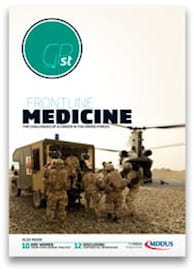SOME 10-20 per cent of daytime contacts between patients and GP surgeries are now by phone according to latest estimates.
'First contact' with GP out-of hours services is usually by telephone, with a significant proportion of contacts being managed entirely over the phone. This is significant as around 70 per cent of primary care consultations are now provided by these services.
So do patients approve?
A comparative study of telephone and face-to-face appointments published last year by a group of primary care researchers reported that overall satisfaction with both forms of consultation was high in both GP and patient groups (over 90 per cent). But it was the quality of some telephone consultations that was found wanting.
In the study published in Quality and Safety Healthcare, 19 GPs from nine practices evaluated audio recordings of 106 telephone and face-to-face consultations and concluded that those by phone were significantly less likely to meet the RCGP quality assessment criteria requiring GPs to "obtain sufficient information to include or exclude likely relevant diagnoses". Telephone consultations were much shorter and involved less data gathering, rapport building and counselling than face-to-face consultations.
Dr Brian McKinstry, lead researcher, commented: "Telephone consultations may be more safely suited to follow-up appointments and care of long-term conditions where an initial assessment and provisional diagnosis has already been made."
So where do the clinical and medico-legal risks and pitfalls lie? Our experience at MDDUS is that three general themes tend to arise:
1. Failure to see the patient when appropriate.
2. Failure to pass on important information (e.g. a test result)
3. Failure to provide sufficient advice in the event of a deterioration.
There are certainly ways to minimise such risks during telephone consultations. A sound structure for clinical encounters by telephone is actually very similar to that in face-to-face consultations. The doctor needs to:
- Verify the patient’s identity.
- Establish the relevant clinical facts.
- Obtain the patient’s perspective about the issues at hand.
- "Examine" (ask the patient or other third party to describe things, e.g. skin lesions).
- Reach a decision about what is likely to be going on and convey this to the patient.
- Come up with a management plan which can be understood by the patient.
- Put a ‘safety net’ in place should things not go as well as expected. That is, make sure the patient is clear what they must do if things do not improve or deteriorate.
- Take comprehensive notes of what is discussed/advised.
The absence of both proximity and visual cues during telephone conversations means that the doctor needs to compensate. When on the phone it can help to talk more slowly and clearly than normal (the so-called 'telephone voice'). More questions than normal should be asked to ascertain and be certain about your facts and to ensure the patient clearly understands what is being said. You should consider asking the patient to write down the details of any agreed management plan, and what to do if things don’t go as expected.
Valuable clues can be drawn from the tone and nuance of the patient’s voice on the telephone in the absence of visual cues from body language. Is there any incongruity with what is actually being said?
It would also be advisable to adopt a lower decision-making threshold about reverting to a face-to-face consultation, and being cautious about any delays. Remember that a two-hour gap before physical consultation is long enough for serious deteriorations in acute cases.
- Some practical risk reduction measures to consider include:
- Ask for dedicated and protected telephone consultation time.
- Increase and improve levels of documentation.
- Ask about and use standardised protocols for managing the more common conditions, similar to those used by NHS Direct and NHS 24, with a low-decision making threshold for organising face-to-face consultations.
- Request training in the telephone consultation process.
No doubt there will be increased pressure in future for GPs to deal with patients via telephone as it reduces contact time and costs. And there may even come a time when video phones or Skype are utilised. Will this provide more effective and less risky remote patient consultations? Time will tell.
Alan Frame is risk adviser at MDDUS
This page was correct at the time of publication. Any guidance is intended as general guidance for members only. If you are a member and need specific advice relating to your own circumstances, please contact one of our advisers.
Read more from this issue of Insight Primary

Save this article
Save this article to a list of favourite articles which members can access in their account.
Save to library


